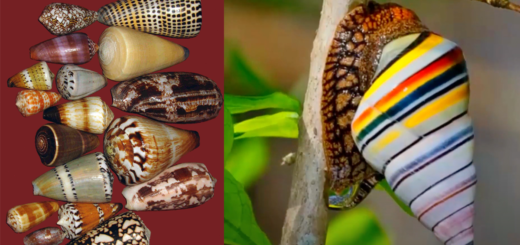Giant Lizards Called Argentine Tegus are Invading the American Southeast
Argentine tegus, four-foot dog-sized reptiles resembling spotted wingless dragons, are invading the southeastern United States. The Argentine black and white tegu, Salvator merianae, can weigh over 10 pounds, has few predators, and multiplies quickly.
In some cases, they may reach almost five feet in length, the largest species of tegu in the world. Thus, they are also called the Argentine Giant Tegu.
While they may not pose a big threat to humans or common household pets, they can bite and whip with their tails. In some cases, they have been known to chase people aggressively.
A much bigger threat is posed to native ground-nesting birds and tortoises since they love to eat eggs. Of course, they’ll also eat almost anything, including vegetables, fruits, and insects. Therefore, they are omnivores like us.
Today, it looks like these invasive, adaptable dragons may spread further into the southern states. Each one can live up to 20 years and can make a popular, intelligent pet. However, owners should never release them into the wild. Instead, they should remain in captivity or be surrendered to a program like the Florida Exotic Pet Amnesty Program.
Origin of the Argentine Black and White Tegu
As you probably guessed, Argentine tegus are from South America. There, they live over a vast range extending from southern Argentina to northern Brazil. They are found in Brazil, Paraguay, eastern Uruguay, and northern Argentina.
Tegus are among the smartest lizards and highly opportunistic, with strong teeth and jaws. Although they spend most of their time on dry land, they swim well and enter fresh and marine environments. Often, they are found near forested areas near grassy habitats or disturbed agricultural and roadside areas.
Argentine tegus aren’t picky about what they eat or where they live. Thus, you can find them happily living in untouched nature or around human structures and activities.
How They Got to the Southeast United States
The most likely reason these tegus are strolling about the states is that pet owners released them. Note: They can also stand on two legs and sprint like a mini-Tyrannosaurus Rex.
First, they made it to the Florida Everglades, like many other reptile pets such as pythons. After a decade, the reptiles spread to Hillsborough, Miami-Dade, St. Lucie, and Charlotte counties.
Once they made it to these wetlands, the giant lizards began happily eating whatever they could find, including endangered birds and reptiles like sea turtles’ and native gopher tortoise eggs and hatchlings.
Also, they eat American alligator and crocodile eggs, consuming entire nests in one sitting.
When these tegus nest, they can lay over 30 eggs, and then the mother guards them. Thus, their population can grow quickly, even though hunters can legally kill them humanely. As non-native species, they are not protected by state laws, but hunters require a permit on public lands.
A female tegu can begin to lay eggs when she’s only twelve inches long, generally the second year of brumation. She lays her many eggs in a nest that can be aboveground or in a burrow.
See more about the invasion of the Everglades from Great Big Story below:
Related: Mourning Geckos – Reptiles That Reproduce Without Males
A Tegu Went Down to Georgia, South Carolina, and More
Now, the tegus are spreading to Georgia and South Carolina. Fortunately, wildlife officials are trying to stop them.
In Georgia, wildlife officials are trying to eradicate the tegus from Toombs and western Tattnall counties. Using traps, they have to trap each tegu painstakingly. However, they encourage residents to dispatch tegus humanely.
Georgia officials have asked people to avoid leaving pet foods outside, as it can attract the lizard. Volunteers in the state trap the tegus and give them to people who want them as pets.
Meanwhile, in South Carolina, the tegus have made it to at least four counties. According to National Geographic, there have been sightings in Alabama, Louisiana, and Texas. In Alabama, legislators enacted a ban on importing the animal.
Amy Yackel Adams, a biologist with the U.S. Geological Survey, says the tegus could spread to the entire southeast portion of the United States. Currently, there’s no official estimate of how many currently live in the U.S.
It’s possible U.S. poultry farmers may be impacted as the lizards are known to sneak into chicken coops in Venezuela. There, they are known as el lobo pollero, “the chicken wolf.”
Cute Babies Have a Bright Green Head
Baby Argentine tegus have a bright green head and back. Their bright coloration and spots, inquisitive nature, and relatively docile personalities make them attractive pets. On the other hand, they grow enormous and need lots of space, food, and attention.
Like many reptiles, the tegu can drop its tail and regrow it, though it may not grow back to the same length.
As noted, they can live for two decades so they are a lifetime commitment. Sadly, this is why so many likely ended up in the wild.


At adult size, they require an enclosure at least eight feet by four feet. Thus, they require far more space than their juvenile size suggests. One would require a large reptile room for an ideal environment. Consequently, few breeders produce them for pets.
As a pet, these large reptiles can deliver a severe bite. Fortunately, some experts say they tend to be mellow compared to the less-expensive similar-looking Columbian tegu. They are intelligent, curious, and seem to enjoy some interactions with their trusted humans.
On the other hand, these tegus can have periods of grumpy behavior as they become adolescents. Notably, behavior can change fast if pets are taken outside in natural light.
See more about the Argentine Tegu as a pet from Clint’s Reptiles:
Brumation During Cold Months
The Argentine tegu is capable of surviving cool temperatures with a brumation period, similar to hibernation. When temperatures drop, they seek underground burrows and move very little without eating. Rather than creating a burrow, they steal other animals’ homes like gopher tortoises or burrowing owls.
During brumation, their metabolism slows to the extent that they don’t require food for long periods. However, the tegus still must occasionally find water.
Through brumation, tegus can survive colder temperatures than some other reptiles. Plus, they can elevate their body temperatures by as much as 18 degrees Fahrenheit above the surrounding ambient temperature.
In Florida, the tegus emerge from their burrows as early as February.
Like other invasive species like the Asian Giant Hornet, wildlife officials have their hands full trying to stop their invasions. Similar and even bigger reptiles called Asian and Nile monitors are also invading the Sunshine State, first seen in 1990.
See more about the African Nile monitor lizard invasion in Florida via WPTV:
Are Argentine Tegus Here to Stay?
The Argentine black and white tegu may be here to stay, despite wildlife officials’ best efforts. In Argentina, they have remained plentiful, though the country can export two million tegu skins annually. Skins are used for leather, and the reptiles are also a food source for rural and native people.
Wildlife officials trapped around 900 Argentina tegus in South Florida in 2020. Nevertheless, they remain plentiful, according to the U.S. Geological Survey. In Georgia, numbers are so far much smaller at only six, down from twelve last year.
If you spot one of these reptiles, contact your local wildlife officials to report the sighting. Although they are fascinating creatures, they pose a real threat to our irreplaceable native wildlife.
See a wild tegu chase from Brave Wilderness:
Featured image: Screenshot via YouTube







